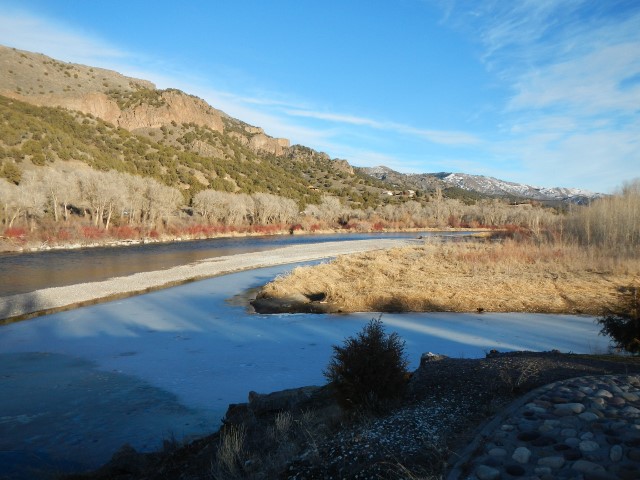Good Results from a Violent Winter
During the last few years winters have been near disasters with respect to providing snowfall to restore our reginal waters to normal amounts that are beneficial for resident salmonids. Consequently, those salmonid populations have dwindled a bit, and those remaining have been relatively inactive in responding to our fly fishing efforts.
Although annoying, this winter has been the most generous in decades for providing replenishing amounts of snow. Here are some examples of regional drainages benefiting from the more than generous snowfall. Estimates earlier this week concluded the amounts in the Henry’s Fork and Snake River drainages above Palisades Reservoir are around 120% of normal, and the Big Lost River’s is about 140% of normal. Other sinks drainages are at similar amounts. But not to be outdone, that of the Bear River’s is about 170%. And leading the pack, those of the Blackfoot, and Portneuf Rivers and Willow Creek are about 185% of normal. This abundance of snowfall in those four latter drainages could not be better news for the immediate future of endangered native cutthroat trout the major salmonid in each of these.
The effect of this abundance is that first ground water amounts will be restored to natural levels, then streams will be restored to the same, and still waters will move closer to natural volumes. Irrigation draw -downs will not have as negative an impact on hosted fisheries as in past years. In particular, many of our depleted smaller waters, not influenced by storage reservoirs, will “come back to life” with respect to providing better conditions for hosting salmonids and therefore being fished.
Spring time weather will determine the length and intensity of the upcoming run-off season, and can even impact the first months of fishing season. Even if a delayed fishing season occurs, the amount of water generated from the abundance of snow melt will benefit our salmonid populations in that it will begin a restoration to natural amounts. And the cooler waters will provide higher concentrations of dissolved oxygen which salmonids need to be active.
So anglers and our salmonids alike will benefit from the furious winter that is finally winding down. It may mean a delay in our best fishing conditions, but such is worth the wait when more active salmonids for a longer time are results of a winter that brought so many road closures, shoveling, and downright foul weather.



